Chris Howard's Blog, page 13
May 27, 2023
IC 5070 in Cygnus in HOO narrowband (Hydrogen-alpha and Oxygen 3...
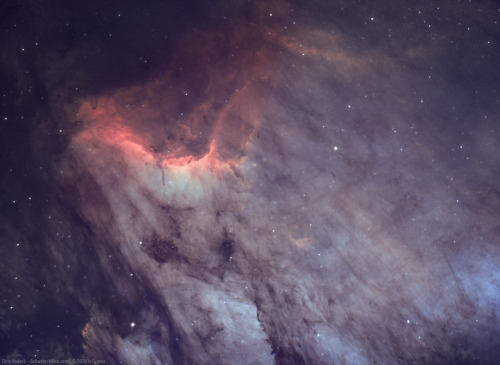
IC 5070 in Cygnus in HOO narrowband (Hydrogen-alpha and Oxygen 3 mapped to RGB, with OIII taking both Green and Blue channels). Here’s the data I captured: 38 x 300-second Ha 3nm frames, 48 x 300-second OIII 3nm frames with the ZWO ASI1600MM-Pro monochrome camera, cooled to -10C. A little over 7 total hours of data gathering for this one. More of my astro stuff here: https://SaltwaterWitch.com
May 26, 2023
Out with the narrowband rig tonight, waiting for the Milky Way...
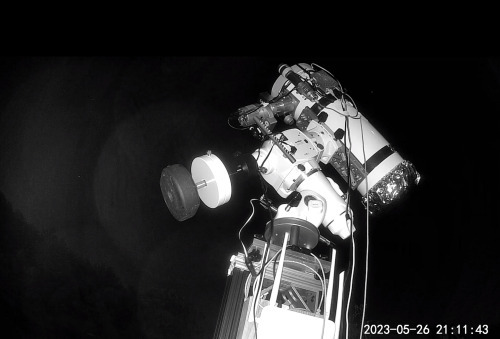
Out with the narrowband rig tonight, waiting for the Milky Way to rise above 30° in the East.
May 24, 2023
The Pelican Nebula in Cygnus (IC 5070), 3nm Ha filter, 49 x...
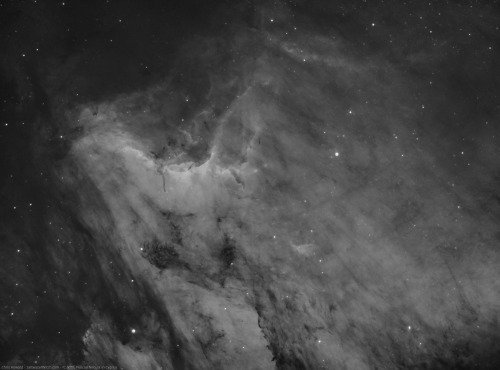
The Pelican Nebula in Cygnus (IC 5070), 3nm Ha filter, 49 x 300-second exposures stacked in DSS shot with a ZWO ASI1600MM-Pro monochrome camera running at -10C. IC 5070 is part of the larger North America nebula region, about 2600 lightyears away.
With the milky way swinging up in the East above 30° around 11:30 pm, I only have three to four hours of narrowband nebula imaging time. Spring is “Galaxy Season” after all, with most of the northern hemisphere night sky time directed away from our own galactic core and into the depths of the known universe. You know, where many of the other galaxies are.
The skies weren’t particularly clear last night, but good enough for some long exposure hydrogen-alpha imaging of the Pelican Nebula (IC 5070) in the constellation Cygnus. The Pelican is the next-door neighbor of NGC 7000, the North America Nebula. With an 800mm focal length and the ZWO ASI1600MM camera I can only fit most of the nebula into the frame, but a nice clear view of the star-forming structures on the north-facing side, the “top” of the nebula.
May 22, 2023
On May 19th, 2023–three days ago, Japanese astronomer...
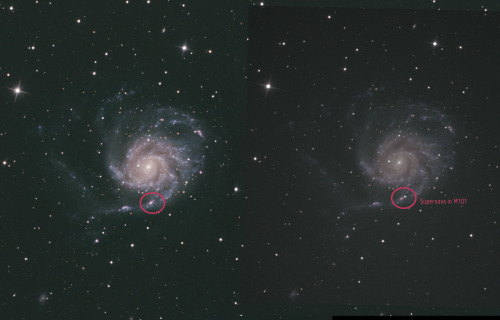
On May 19th, 2023–three days ago, Japanese astronomer Koichi Itagaki discovered a supernova in M101 galaxy, 21 million lightyears away. I shot M101 last week, and tonight I took one exposure in Hydrogen-alpha (narrowband) and overlaid the images. That bright dot circled on the right is SN 2023ixf, the new supernova!
May 16, 2023
And here’s the full image of M101, the Pinwheel Galaxy,...
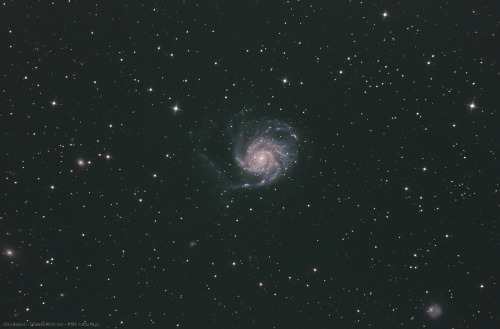
And here’s the full image of M101, the Pinwheel Galaxy, slightly cropped to remove dithering artifacts at the top and side. What’s crazy is there are at least a dozen other galaxies in this frame, most of them many more millions of lightyears distant than M101. All of the actual stars in this frame are within our own galaxy, the Milky Way. Everything else is another galaxy millions of lightyears away.
May 15, 2023
From my Sunday night astro imaging run: the Pinwheel Galaxy...
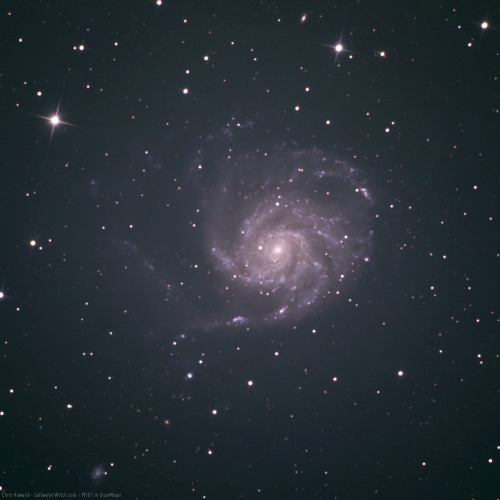
From my Sunday night astro imaging run: the Pinwheel Galaxy (M101, NGC 5457) is 21 million lightyears away in the constellation Ursa Major. It’s quite a bit bigger than our own galaxy: a 170,000 lightyear diameter and a trillion stars. We’re looking 21 million years back in time on this beautiful galaxy, tilted perfectly, face-on (or top-down?) from our perspective in the Milky Way, so that we can clearly see its spiral form, twisting dust lanes, HII regions, and other detailed structures. Space is big. And it takes that long for the light of a trillion suns to reach us from this distant galaxy. Imaging notes: about 6 hours of data, 70 x 300-second exposures with the ZWO ASI071 color camera cooled to -10C, UV/IR Cut filter, 800mm f/4 newtonian scope. With a 28.8 arc-minute apparent size, M101 is about the limit for deep sky targets with the 800mm focal length scope.
May 14, 2023
NGC 7000 in Cygnus - I bought the Optolong L-eXtreme dual...
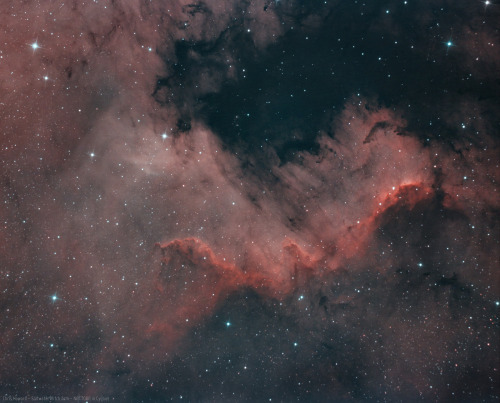
NGC 7000 in Cygnus - I bought the Optolong L-eXtreme dual narrowband filter last year, but I haven’t seriously used it until last night. Paired with the ZWO ASI071 and the 800mm f/4 Newtonian, I am pleasantly surprised with the data and processed image. The North America Nebula (NGC 7000) in the constellation Cygnus hit 30° above the horizon around midnight, and I spent over 3.5 hours capturing data, 45 x 300-second exposures stacked in DSS. This has to be the most efficient way to get to a bi-color narrowband image, using a single filter and color astronomy camera. These colors are also close to true in terms of where they are on the visible spectrum, with hydrogen-alpha in red and oxygen III in blue.
May 12, 2023
An 8 second exposure of my astro setup during last night’s...
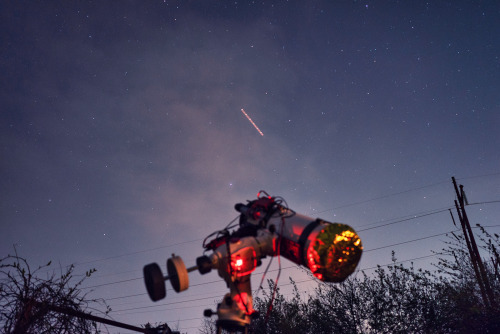
An 8 second exposure of my astro setup during last night’s imaging run, shot in the backyard with the Sony A7s and Zeiss Batis 25mm f/2 lens. The skies weren’t very clear, with patchy clouds sliding by and overall poor seeing (astronomical seeing represents the impact of atmospheric turbulence), but still managed to capture Messier 5 in the constellation Serpens.
May 10, 2023
What a Cluster! From last night’s imaging session: the...
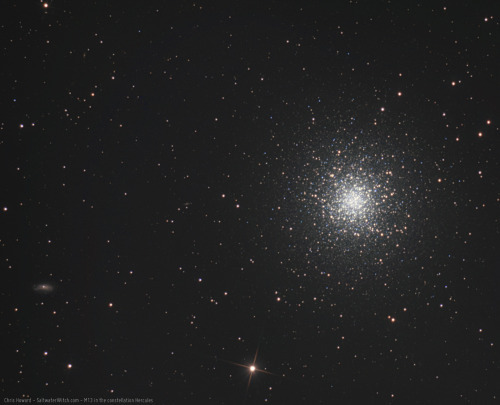
What a Cluster! From last night’s imaging session: the massive star cluster, M13, NGC 6205, the Hercules Globular Cluster, is made up of hundreds of thousands of stars. Like most globular clusters, M13 is not found within the disk and spiral arm structures of the galaxy, but in the galactic halo, the outer spherical shape of the galaxy, above and below the galactic plane. The cluster is about 145 lightyears in diameter. Notice the spiral galaxy on the lower left side–that’s NGC 6207 (about 30 million lightyears away), with the far more distant galaxy IC 4617 (489 million LY!), just a tiny, faint smear between NGC6207 and the M13 globular cluster. Imaging notes: 800mm f/4 newtonian, ZWO ASI071MC cooled to -10C, 60 x 120-second exposures stacked in DSS.
May 9, 2023
I have the 800mm f/4 Newt ready to go tonight, no definite...
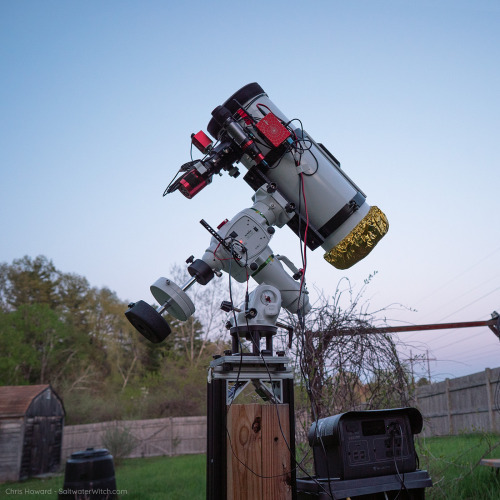
I have the 800mm f/4 Newt ready to go tonight, no definite targets. I think I’m just going to wander around the sky and pick something that looks nice. We’ll see how many frames I can capture before the moon rises a little after midnight.



